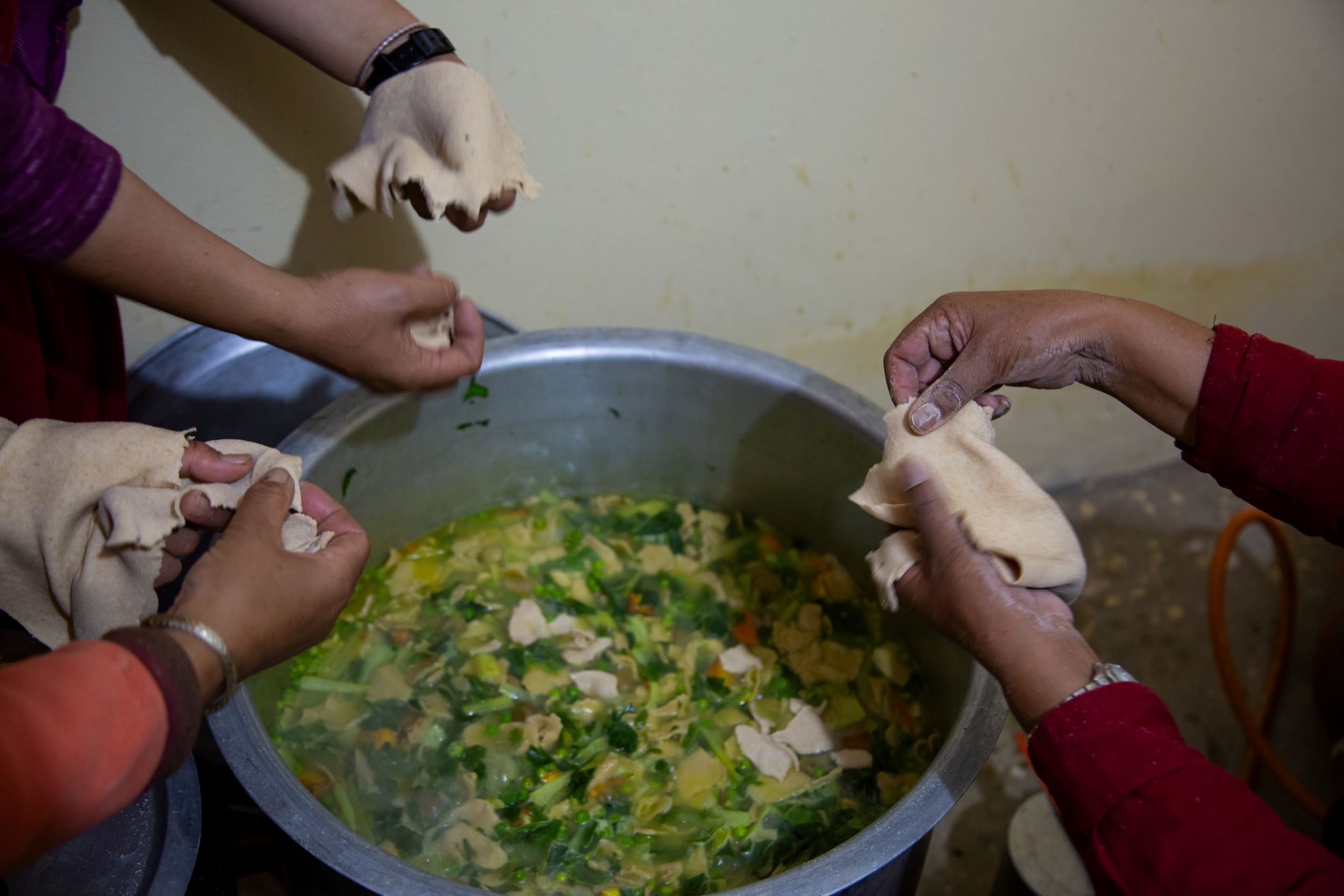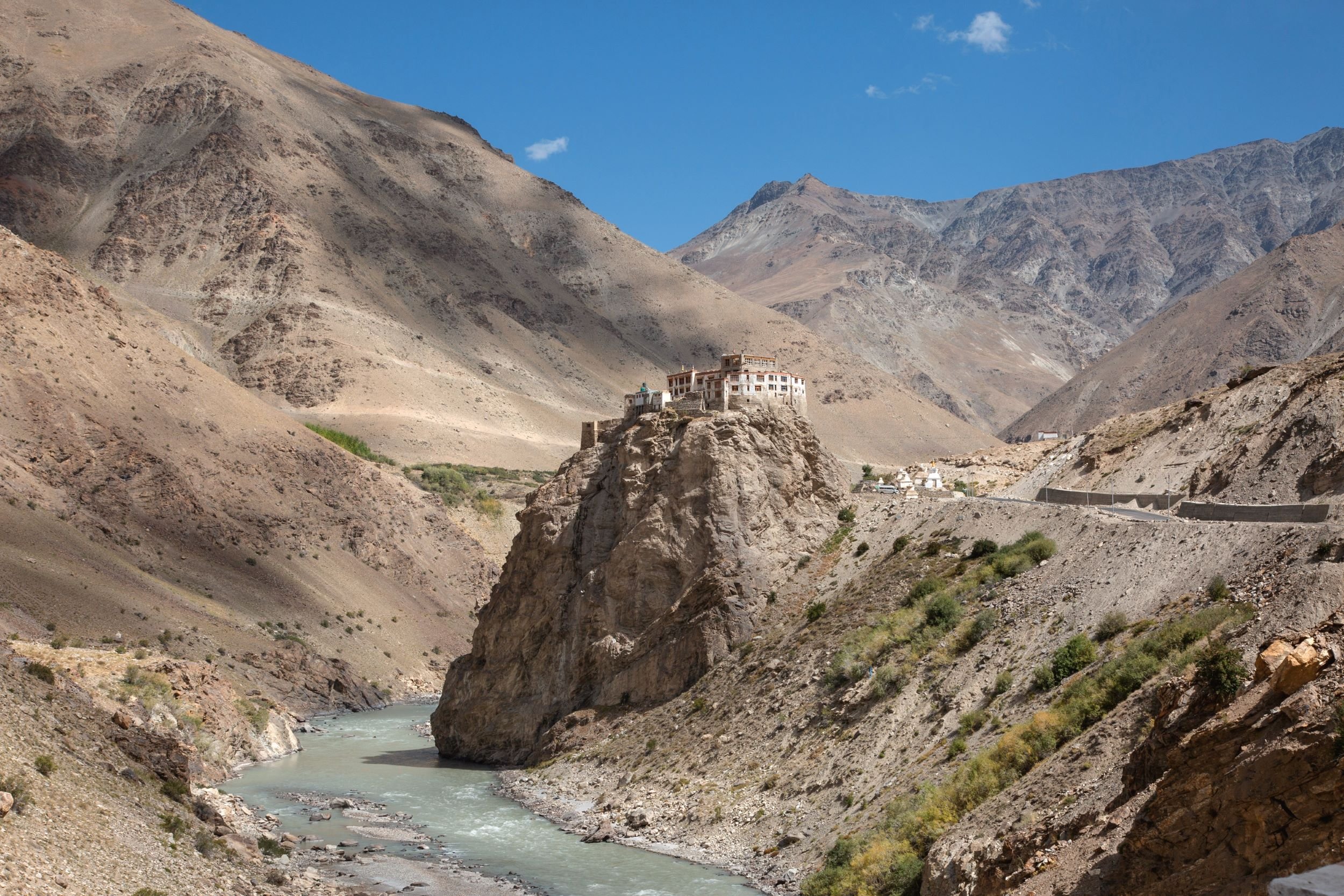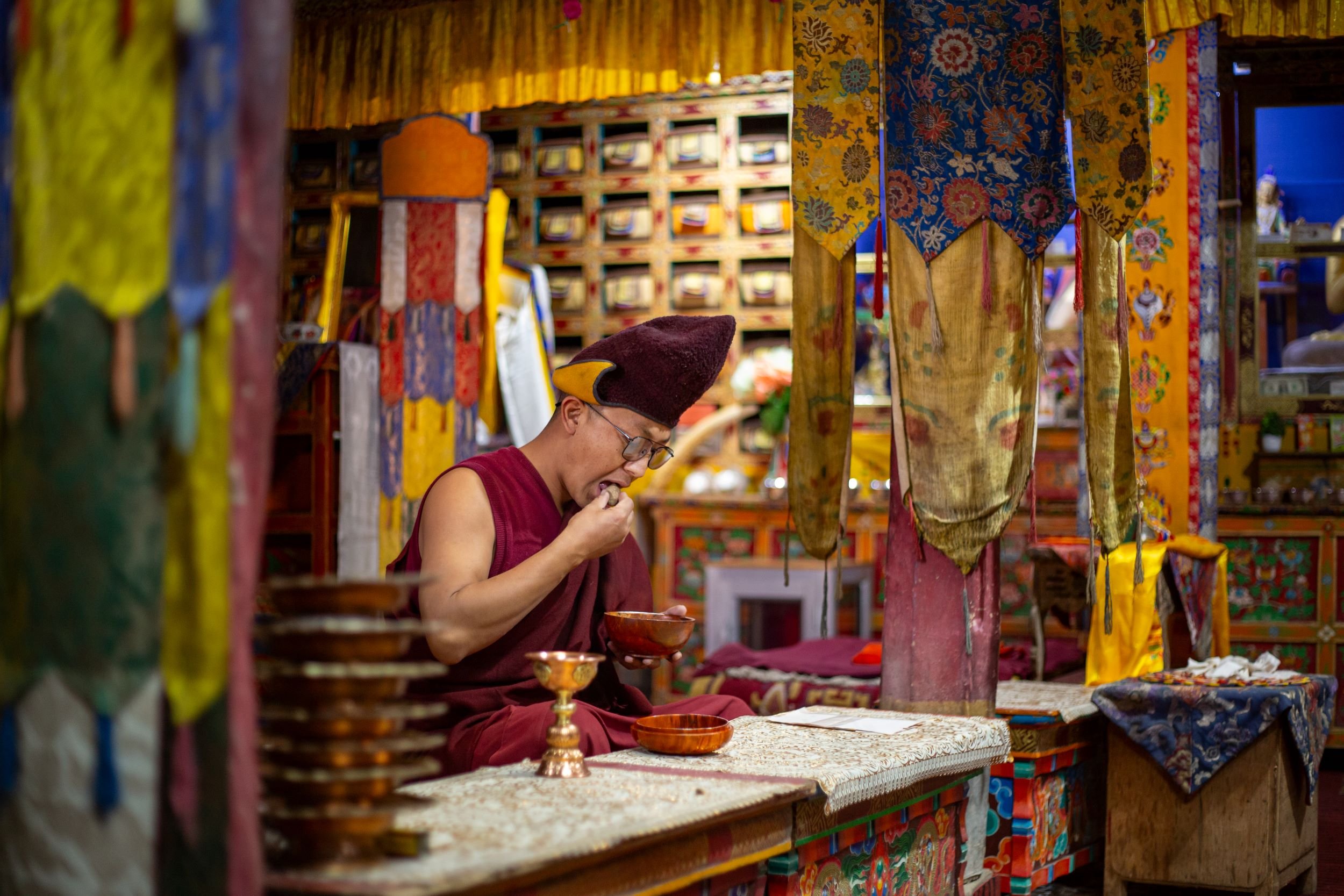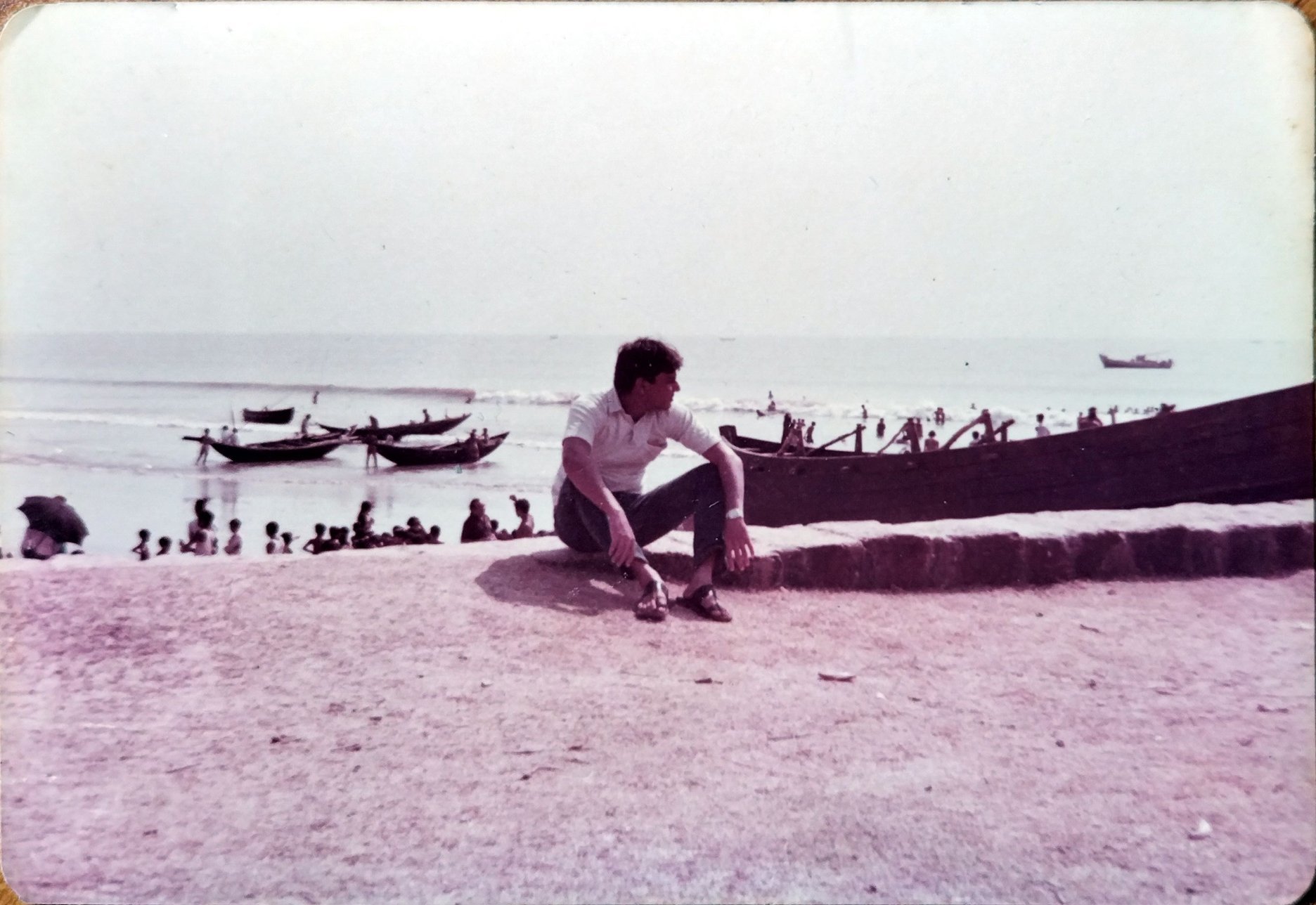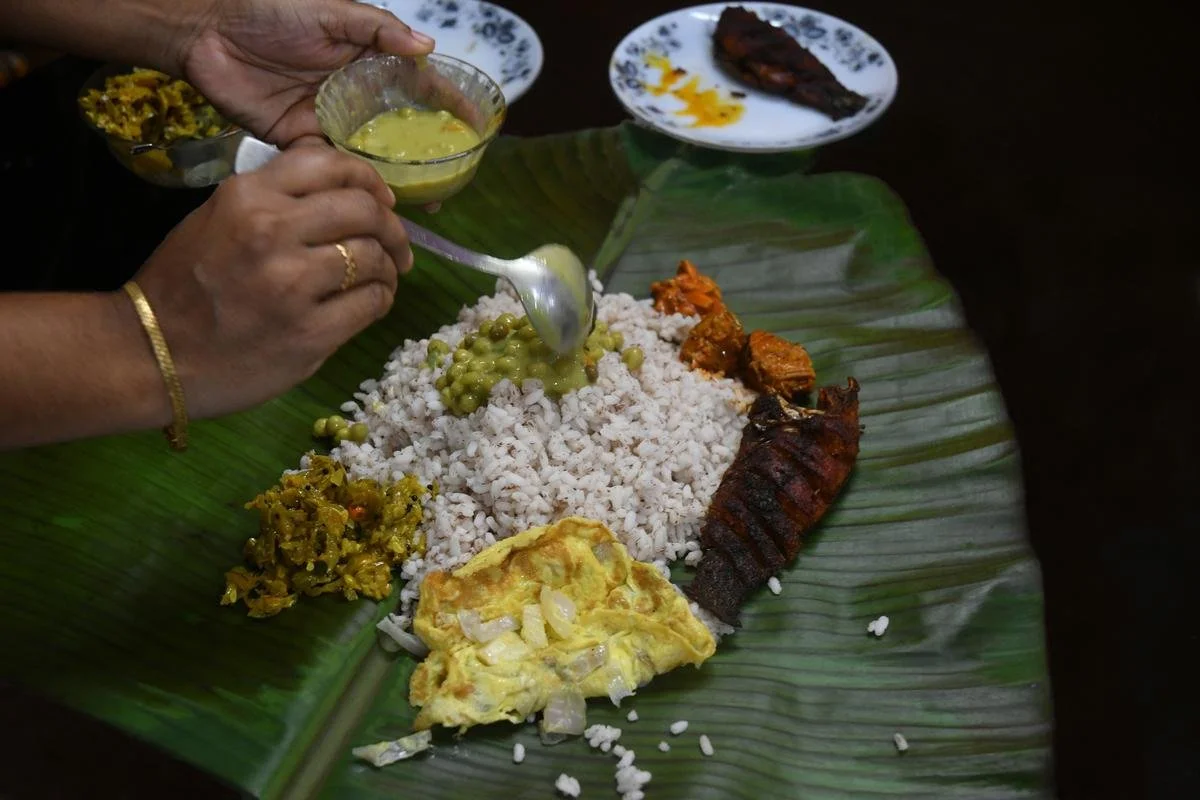The Fascinating Cuisine of the Monks of Zanskar
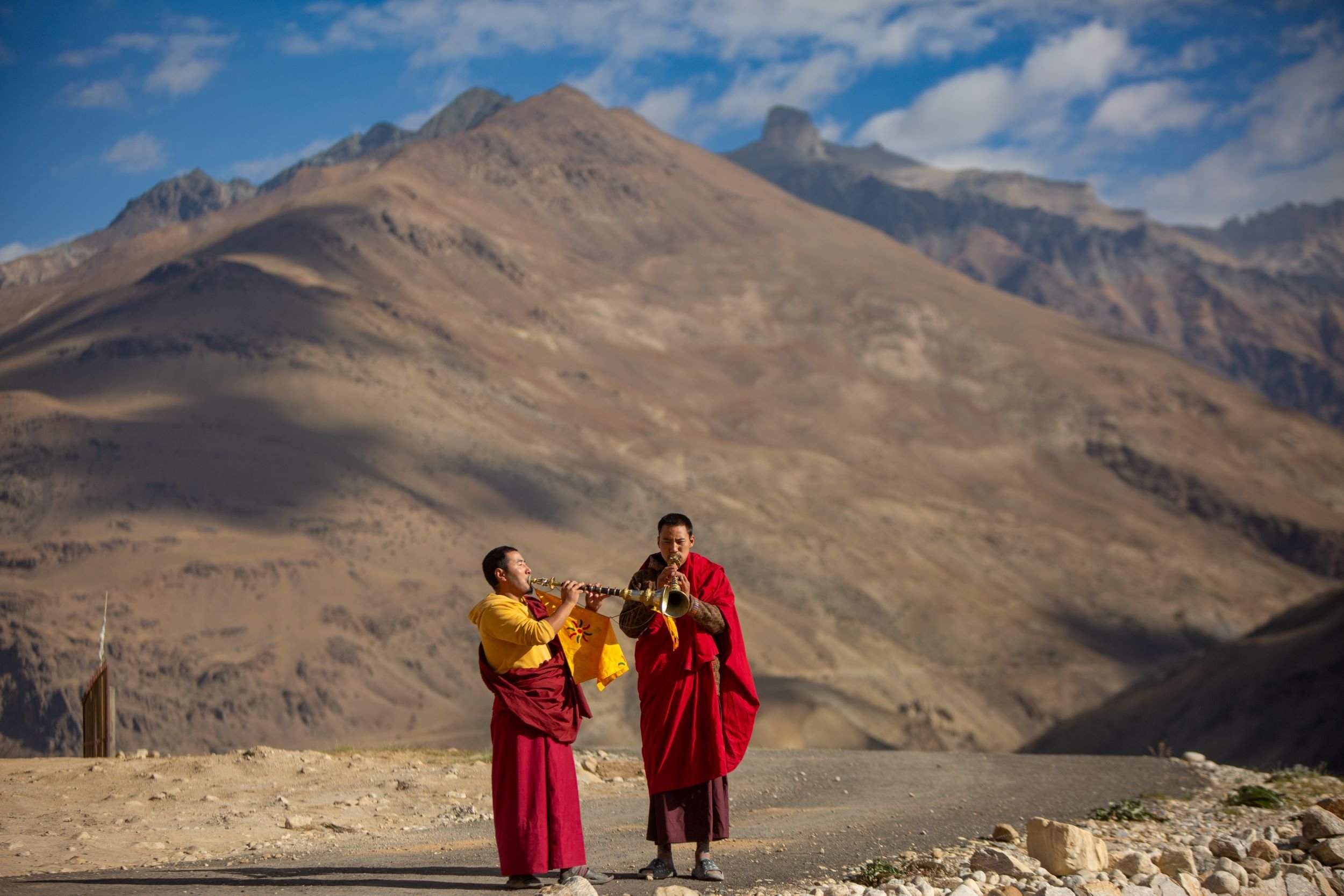
Suhail Bhat and Sameer Mushtaq visit the kitchens of monasteries in the Himalayas, where he studies the centuries-old tradition of harvesting and cooking from recipes preserved in oral tradition, by the nuns of Khachotling Nunnery.
450 kilometers through the Himalayas, upwards of 4,000 meters in a shared maxi-cab, we arrive at a spectacular sight. Nestled in the peaks of the Himalayas, atop a mountain overlooking the Padum Valley, is the Khachotling Nunnery.
Khachotling Nunnery has three structures: a central temple for group prayers, a building housing a kitchen and a hall for teaching and prayer, and a third building where the nuns live. Photos by Sameer Mushtaq
Monks play Dungchen (long trumpet) before starting the special prayers outside the Khachotling nunnery.
Here, nuns in red gowns, engage in a centuries-old culinary tradition as they harvest from the monastery gardens and cook meals from recipes preserved in oral tradition, for the Buddhist monks of the monastery.
Three structures make up the nunnery: a central temple for group prayers, a building that houses the kitchen, and a hall for teaching and prayer, and a third building with six residential rooms where the sisters pass their days.
At mid-morning, the nuns, clad in ankle-length maroon gowns, bustle through the kitchen, preparing the first meal of the day: thuksing, a cheesy vegetable soup with carrots and fresh peas, thickened with sipkay (barley flour). As steam rises from the bubbling saucepans, the room fills with the earthy aroma of cooking vegetables.
A nun examines the density of Thuksing vegetable soap inside theKhachotling nunnery kitchen.
A nun pours Thuksing soup into a cup in the main temple of the Khachotling nunnery.
Head nun, Tsering Domla, 59, sits by the window, offering careful direction. “This custom is passed down from one generation to the next. My masters taught me the craft of making these foods, and now I impart this information to my disciples. I am doing my duty,” she says. The master chef is Tsering Dolma, who is skilfully chopping cheese. Remarkably, there doesn’t exist a written collection of recipes; instead, they are meticulously preserved and transmitted orally from one generation to the next, ensuring the preservation of tradition and technique in every dish as oral histories.
Domla notices that the monks are getting close to their break, and puts the kitchen staff on alert. “They [the monks] do not signal or ask for food, but I can sense when they need it,” she says. To serve the soup, Domla takes slices of churpay (dried cheese) that have been soaked in water overnight, and adds them to the simmering soup.
Churpay is a dried cheese that adds flavour to the vegetable soup.
Tenzin, a nun assisting her, pours the hot thuksing into traditional cups decorated with dragons—a cultural emblem of power—and delivers them to the temple, a few steps away. The monks remove wooden spoons from the folds of their robes, and begin to eat.
Back in the kitchen, we sample our first sip. The soup is smooth like velvet, delicate in its flavours, with a subtle nuttiness from the barley flour and a mellow sweetness.
Tea and Sweets
Meanwhile, the nuns begin on chakhanda, a pink salt (butter) tea that is served through the day.
Tashi, another nun, grabs a long, cylindrical wooden tool with a hollow centre, known as the donmo. She grinds butter in the donmo, as Samphel boils water on the stove, and simultaneously, steeps tea leaves and adds milk. After the butter is ground, the tea gains a subtle pink hue. Samphel then combines the tea with butter using a pakor, adding a dash of salt before to finish the drink. This is the region’s chaza or butter tea.
Butter being ground in a donmo, a cylindrical wooden tool with a hollow center, to add to tea.
Chakhanda or chaza is a pink salt (butter) tea that is served throughout the day.
In the late afternoon, as prayers draw to a close, a 16-year-old monk, Regzin Namgyl, leaves the group to make a special sweet delicacy called tsok — a ritual he has been following for the past four years. Namgyl uses his hands to combine ghee and roughly 4 kilos of flour in a big tub, before adding a litre of vegetable oil. When Namgyl’s arms get tired, Tenzin, a 24-year-old monk, takes over the mixing and adds 6 fistfuls of sugar. The monks take turns kneading the dough for 40 minutes, adding water and ghee intuitively, as needed. Then dry fruit, seasoned with saffron and cardamom, is added to the dough.
Ratanjot, which has been soaked in dyed fabric, is applied to the cone-shaped dough pieces.
Monks Regzin Namgyl and Tenzin, and two nuns, mixing ghee, dry fruits, bread flour, and vegetable oil, for tsok. They shape the dough into cones.
Tsok is placed in the temple, and remains there until the conclusion of the prayer, after which it is distributed among the monks and others present.
Tenzin and Namgyl mould sections of the dough into little cones. Kunzen, a 40-year-old nun, dips ratanjot, which has been soaked in dyed fabric, and spreads it on the cones. The sweet meal is offered to the monks, who place it in the temple. It remains there until the conclusion of the prayer, after which it is distributed among the monks and others present. While many monks carry it with them, several also eat it right away.
At lunch hour, the monks eat vegetables and rice.
For the last meal of the day, the nuns harvest vegetables in the monastery's garden and wash them in water from the glacier. They are then brought to the kitchen and boiled. Meanwhile, Lamo kneads a dough made with bread flour and water. She forms the dough into little balls, which are then divided and pressed into rounds, then cut into 4 equal pieces. Tsering Dolma instructs them to shred the disc-shaped dough flats into pieces and add them directly to the vegetable mixture. The mixture is then cooked for 15 or 20 minutes to prepare the paktuk soup.
Nun Tashi stands in the middle of the vegetable garden of the Khachotling nunnery.
The nuns shred disc-shaped dough flats into pieces and add them directly to the vegetable mixture.
A nun carries a tray of bowls containing paktuk to serve them to the monks praying in the main temple.
Paktuk is a greasy vegetable soup providing monks with the energy they need to keep warm under the cold embrace of the Himalayas.
Basic but nutritious
Buddhists refrain from including onions or garlic in the cuisine during puja, the special prayers that monks perform in the central temple. So a specific ingredient called hotse (stout alpine onion) is used instead. Before being combined with the mixture, it is cooked in oil. The meal is served to the monks before they return to the Bardan Monastery, a 17th-century Buddhist monastery situated 17 km away, where they live.
Tsering Namgyl, the 55-year-old head priest, emphasises that the food, albeit basic, contains the necessary nutrients. “We don’t consume poultry or meat; but, this diet gives us all the nutrients we require,” he says. “The food is significant, potent, and nutritious. It keeps us healthy and warm, especially in the winter.”
Our next stop is the Bardan Monastery, which is tucked away along the placid banks of the Lungnak River, 12 kilometres south of Padum. At first glance, it looks like a castle chiselled out of a massive block of rock. It was built by Lama Barawa, a Tibetan monk who found refuge in the mountains of Zanskar during a six-month meditation retreat.
Bardan Monastery sits on the banks of the Lungnak River
A young monk wearing a cloak leads us to a small, dimly lit room where 45-year-old Rigzin Samphel—a monk who joined the monastery at the tender age of eleven — is making kholak (roasted barely flour) for Lama Tenzin Wangdus, a former disciple visiting the monastery after 15 years. “The dish is easy to make and delicious to eat. You eat it in the morning, and it keeps you energetic until lunch. It is also very quick to come together,” Rigzin explains.
Kholak is an easy dish, made by mixing ground roasted barley with ghee in a wooden bowl, and rolling it out into shapes the size of small tennis balls. The kholak is usually eaten as breakfast.
Lama Wangduws eating kholak at the Bardan Monastery, carefully plucking little pieces of dough with his hand and enjoying every bite.
A few tablespoons of ground roasted barley are mixed with ghee in a wooden bowl, and the dough is rolled into tennis ball-sized rounds. After finishing his prayer, Wangduws turns to the dish, carefully plucking little pieces of dough with his fingers, savouring every bite.
Even the Dalai Lama himself carried kholak from the monastery to Tibet, Tenzin tells us. He believes the organic ingredients set it apart in flavour and nutrition. “It nourishes and gives us the energy we require during the day without requiring the harming of animals,” he says.
Words by Suhail Bhat and photos by Sameer Mushtaq.
ALSO ON GOYA











